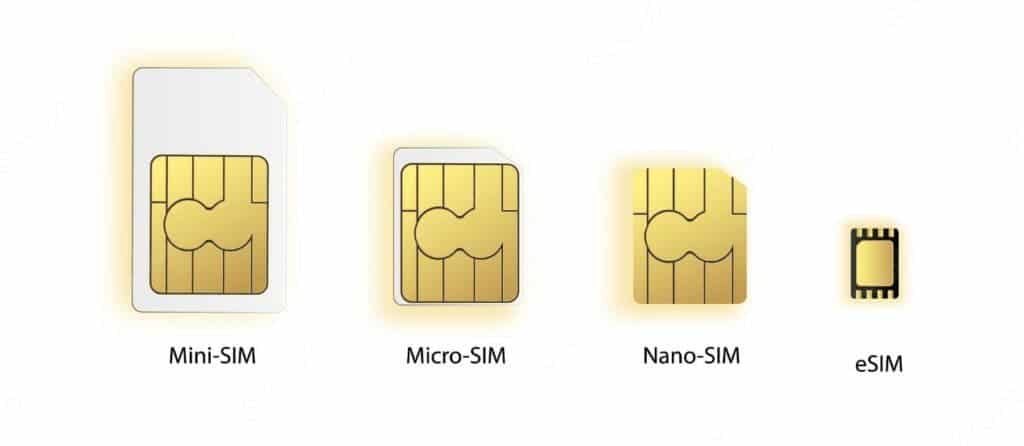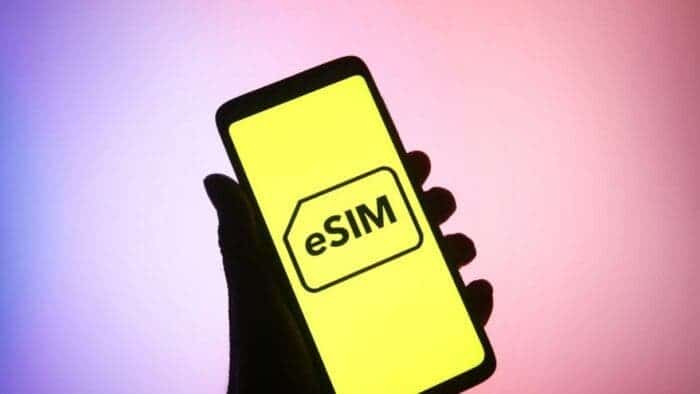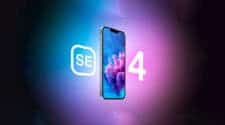Over the past few months, there have been several reports regarding the upcoming iPhone 14 series. We have seen that this new iPhone will be the first model to use a new screen design in five years. However, there are also reports that this new series may have an eSIM-only version. According to Emma Mohr-McClune, director of technical services at GlobalData, some models of the iPhone 14 will eliminate the physical SIM card slot. It may only be a matter of time before Apple ditches the physical SIM. Jeff Howard, vice president of mobile devices and accessories at AT&T, a US telecom operator, claims that eSIM is the result of development, and users can get a better experience.

Over time, more people will accept eSIM, and Apple will wait until the time is right to launch an eSIM-only phone. The eSIM smartphone simply comes with an Electronic SIM. This means that the SIM is an integral part of the smartphone’s internal. Thus, there is no need for an external or removable SIM. The presence of an eSIM converts the pluggable metal card into a virtual SIM card. This eSIM is usually integrated with the device chip. It also provides identity proof for each terminal device to access the operator’s network.
As early as 2011, Apple had an application for a patent with links to eSIM technology. Thus, this technology is not entirely new and has been in development. The advantage of eSIM is that it can save more mobile phone space for larger batteries or other components.
eSIM-only version downside
However, it is important to note that an eSIM-only version of a smartphone has some downsides. For example, it is very troublesome for users to change their mobile phone number/mobile phone card. They need to go to the business hall or scan the code with another mobile phone to replace it. This is obviously not as convenient as simply removing the physical card and replacing it.
An eSIM-only version was on Steve Jobs plan
In early May, Tony Fadell, Apple’s former vice president of iPod, revealed that Jobs hoped that the original iPhone would not need a physical SIM card. Jobs’ wish may come true in the near future. Yesterday, a report from The Wall Street Journal reveals that eSIM technology has begun to gain traction in Europe and Asia.
The Wall Street Journal says the days of physical SIM cards are over. With more manufacturers in Europe and Asia adopting eSIM technology, and the addition of an eSIM-only version to the third-generation iPhone SE, US carriers are already gearing up to welcome eSIM-only iPhones in the near future. It is worth mentioning that Apple stopped providing physical SIM cards in the box of the US iPhone 13 series last year. In addition, some Android manufacturers have completely stopped supporting physical SIM cards.
eSIM getting more popular across Europe
In terms of market acceptance of the eSIM technology, there will be little or no challenges. Most smartwatch users already know how an electronic SIM works. Since many smartwatches already support eSIMs, it will not be so difficult to accept the same on smartphones. The U.S., Europe and many parts of Asia have since accepted the workability of eSIMs.
According to industry experts, it is only a matter of time before most smartphone brands adopt eSIM. However, we will most likely get a mix of both eSIM and regular versions. When users realize that there is no difference between the two, then the eSIM version can now take over. Many brands including Apple will abandon the physical SIM card model but not at the moment.
At present, Apple does not intend to suddenly completely abandon the physical SIM card. Some models of the iPhone 14 series may provide an eSIM-only version. At the same time, in order to take care of the mass market and major operators, Apple’s iPhone 14 series will retain the physical SIM card version. Apple has given the choice to operators, who decide whether to offer an eSIM-only version when selling a physical SIM version of the iPhone.
eSIM offers more security
Anthony Goonetilleke, president of the technology group and head of strategy at eSIM software company Amdocs, told The Wall Street Journal that the future is eSIM for security reasons. For example, when Apple discovers a security issue with a phone, Apple can instantly send security updates to millions of people around the world. This is not possible with a physical SIM card.
In addition, Apple may launch an iPhone with a USB Type-C interface in 2023. The company may also completely cancel the mobile phone interface, only provide MagSafe charging and only provide eSIM for mobile phone cards.
From industry assessment, it appears that the positives of eSIM outweigh the negatives. However, users who want multiple SIM cards in a phone may have to wait longer. Eventually, we will have smartphones with dual eSIMs. There is no doubt that the popularity of eSIM is growing rapidly. If the iPhone use this feature, then we can be sure that millions of Android smartphones will follow swiftly.
As we said earlier, Apple applied for eSIM-related patents as early as 2011, and with the launch of the iPhone XR and XS in 2018, Apple began to introduce eSIM into the iPhone. On iOS 16, Apple added support for eSIM transmission between iPhones via Bluetooth. We can see that the company is technically introducing eSIM features gradually. Eventually, it will enter the full eSIM implementation stage.





